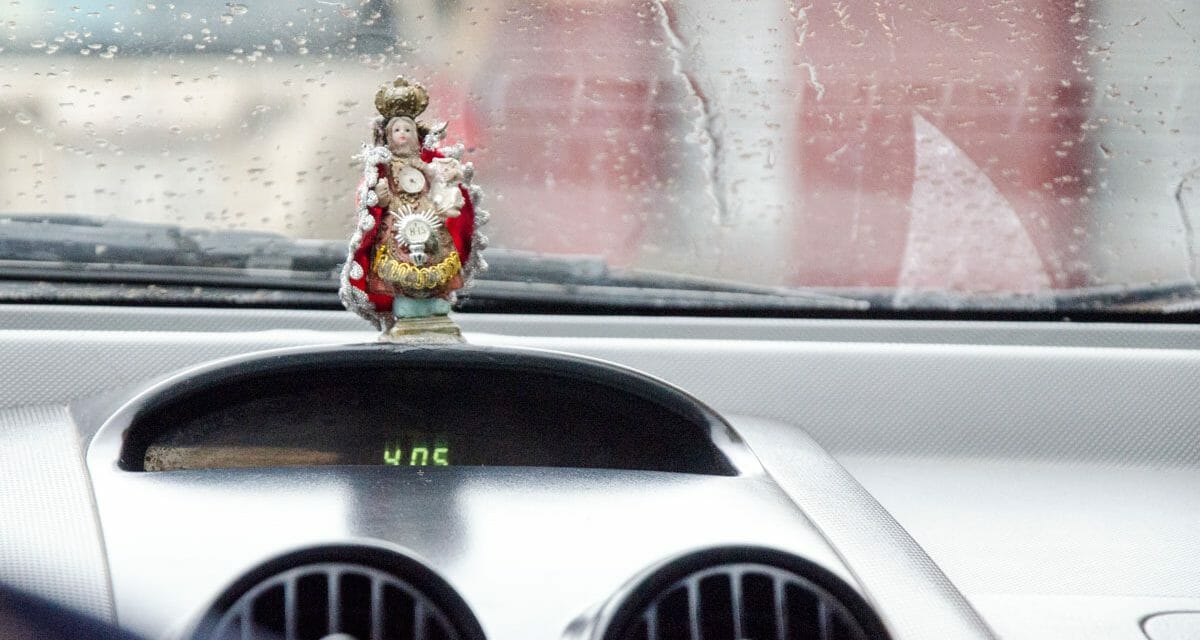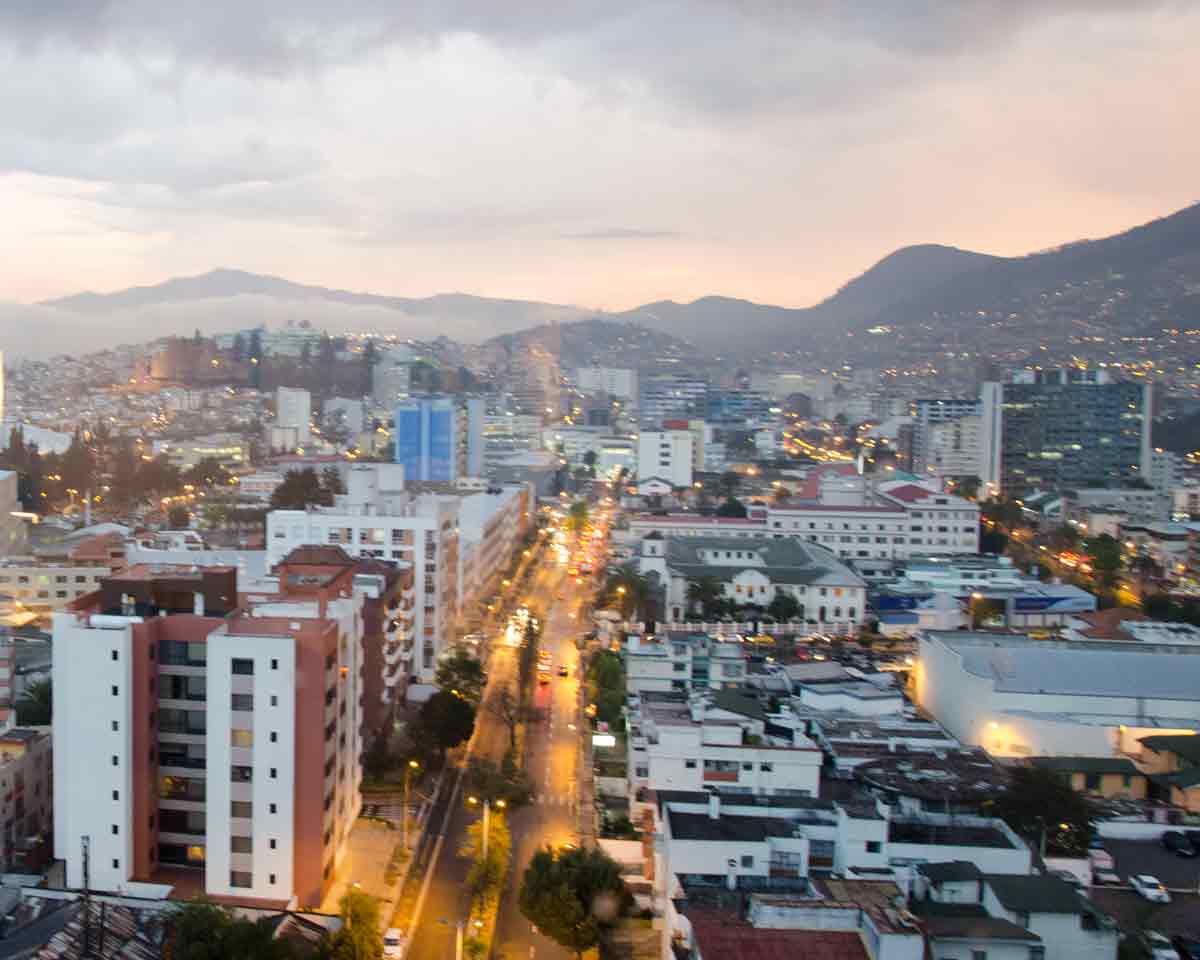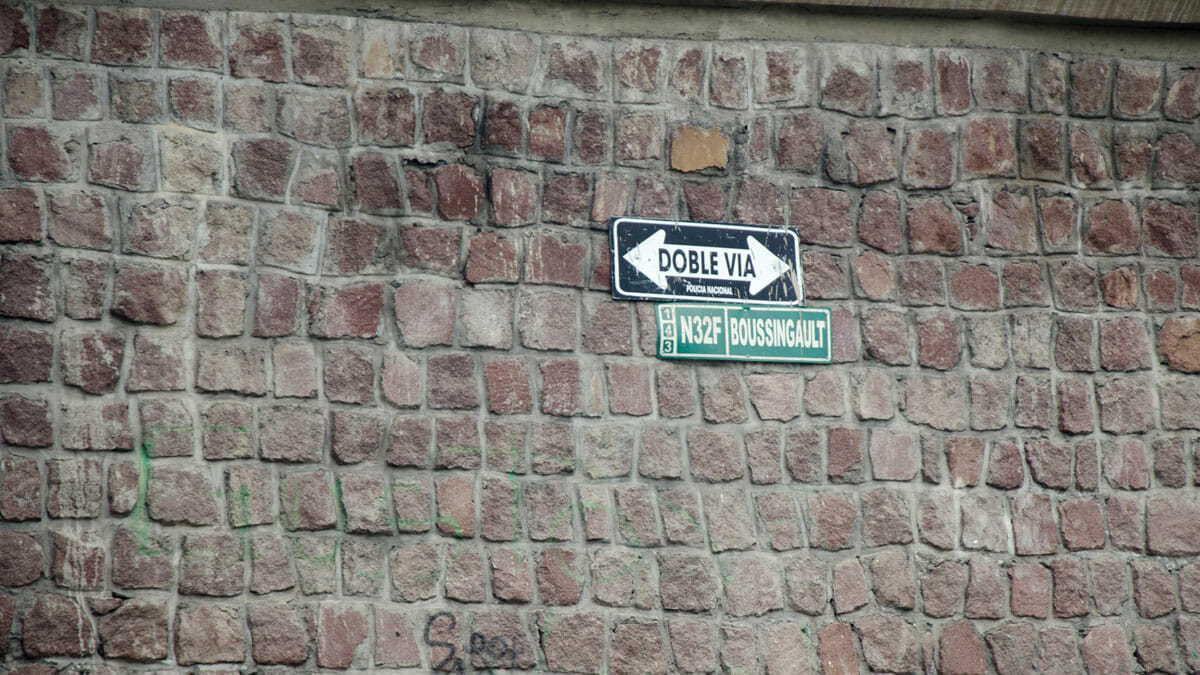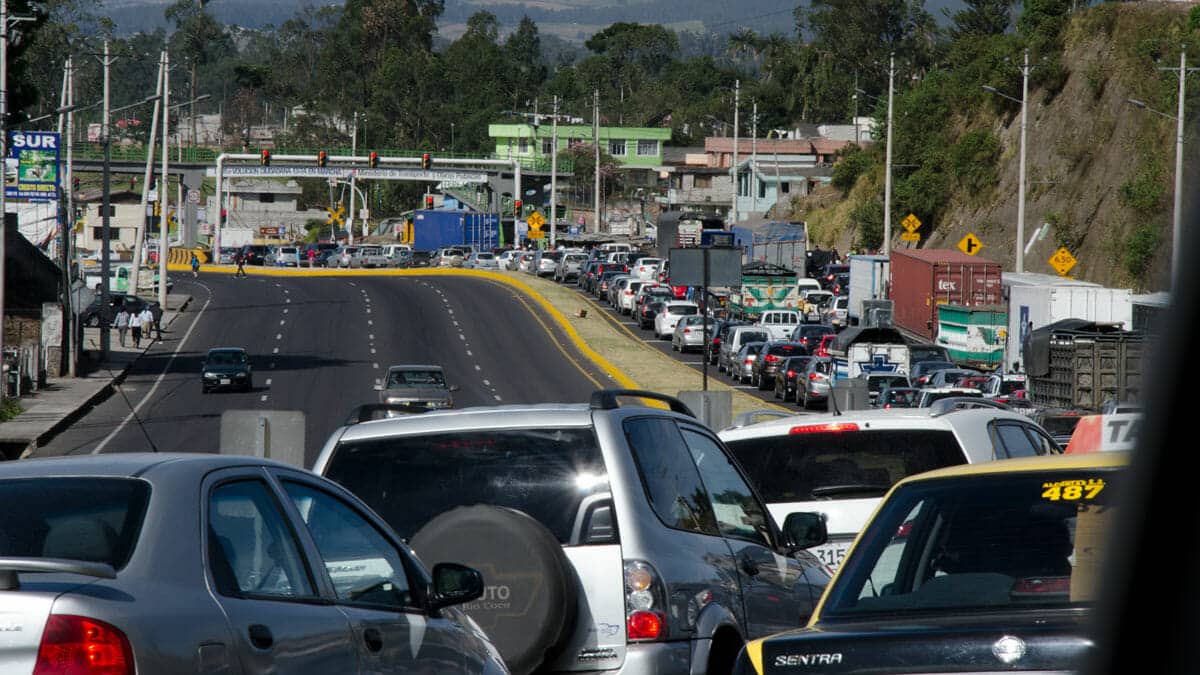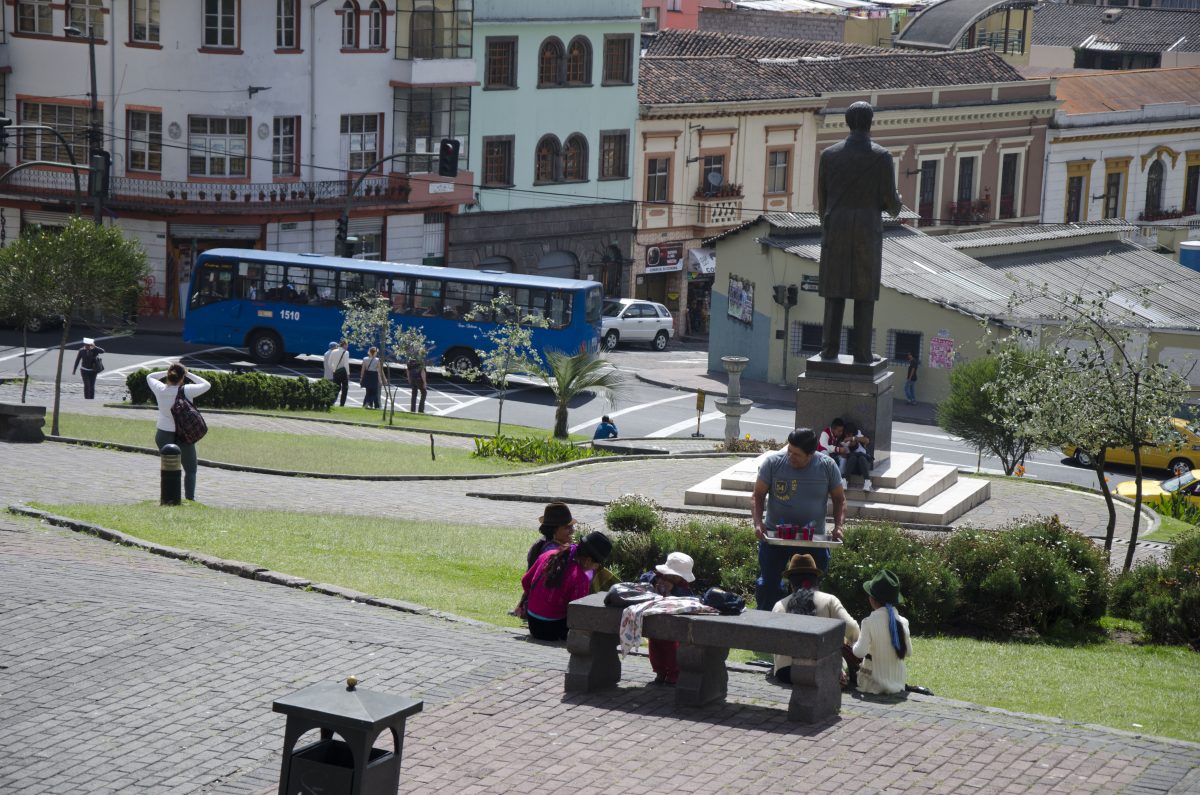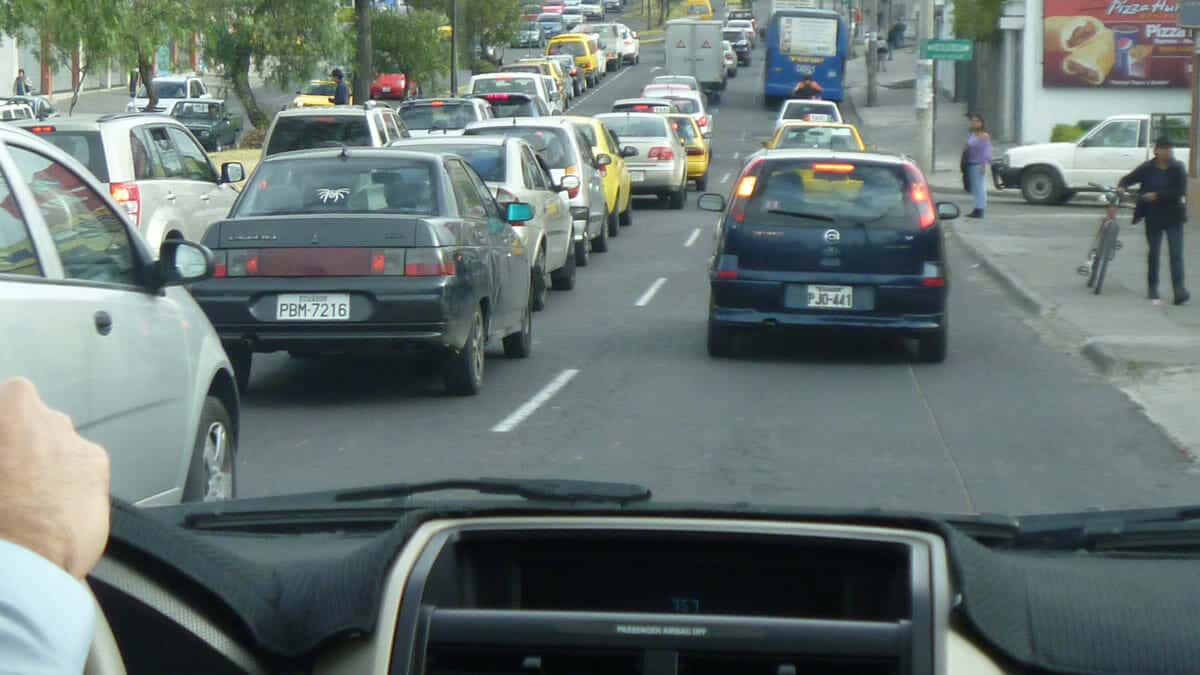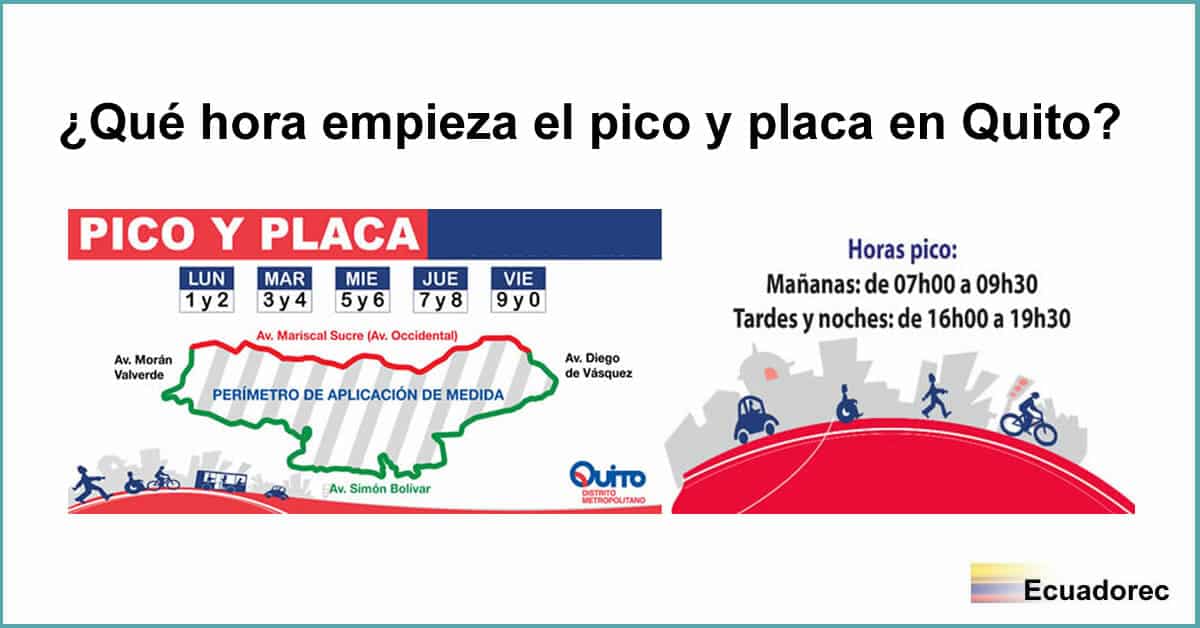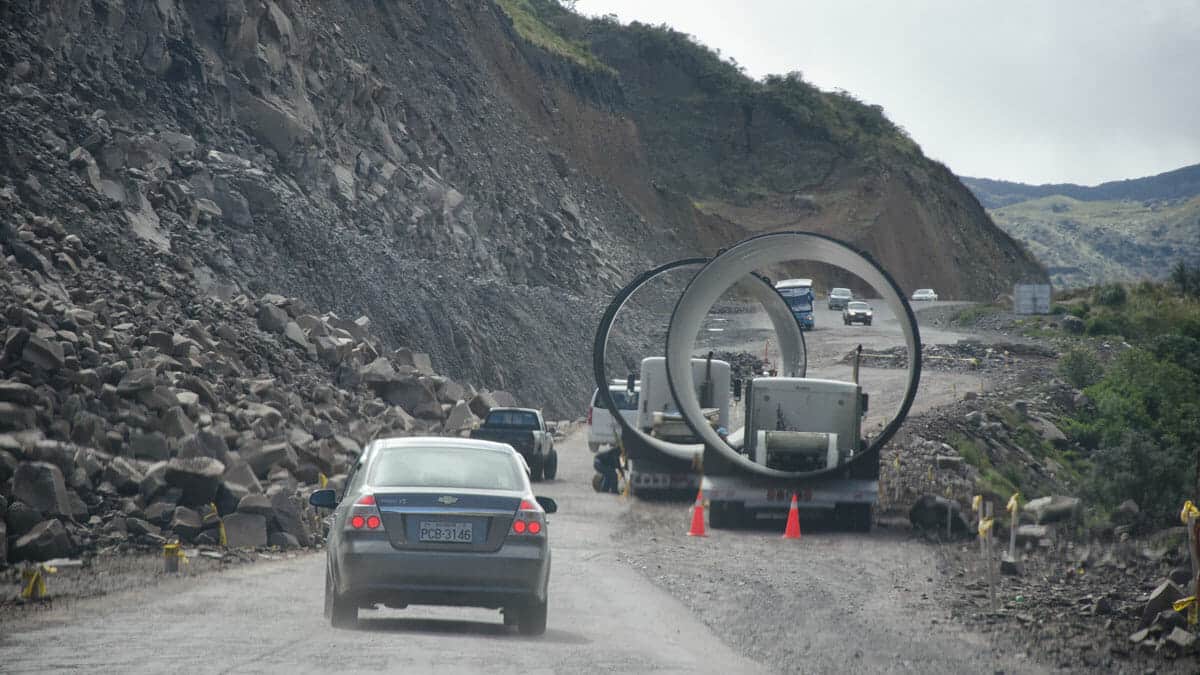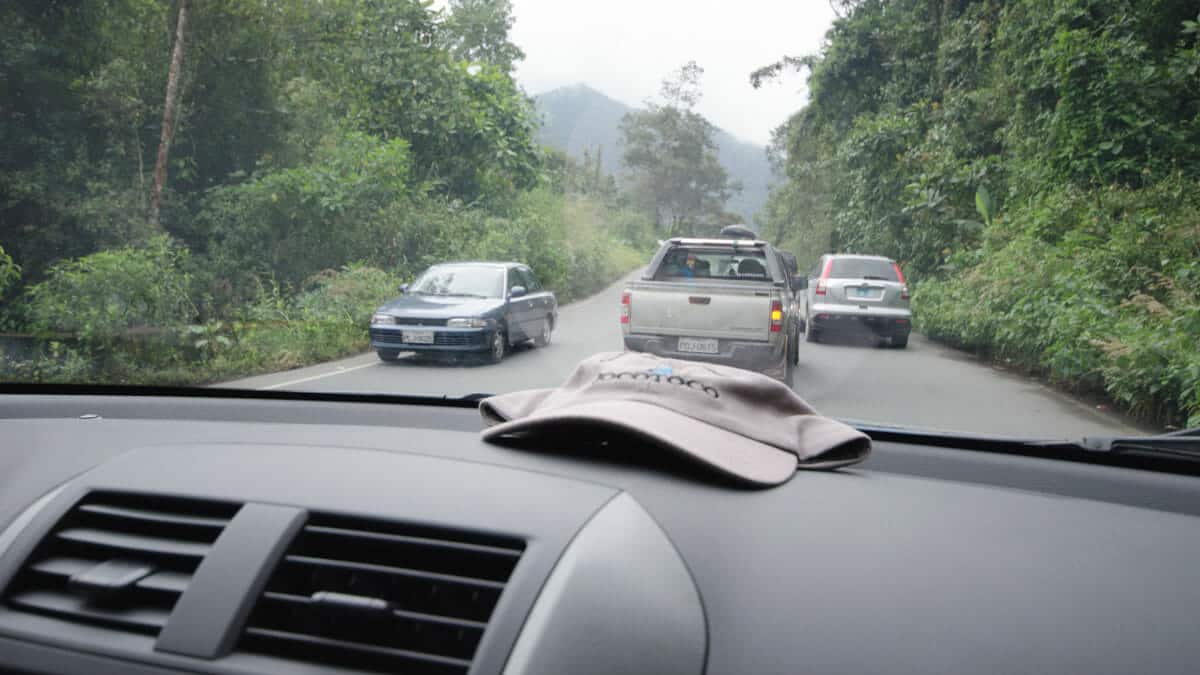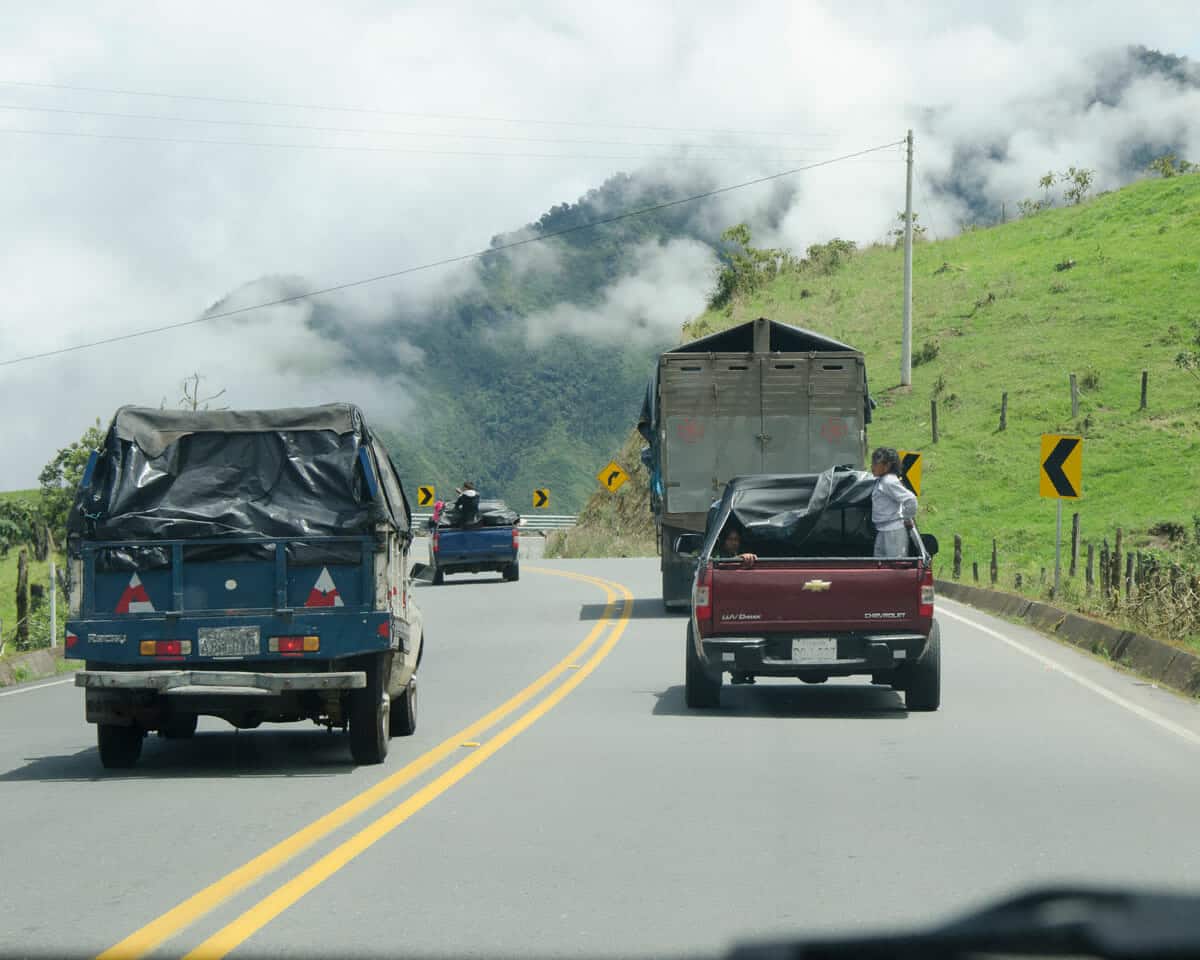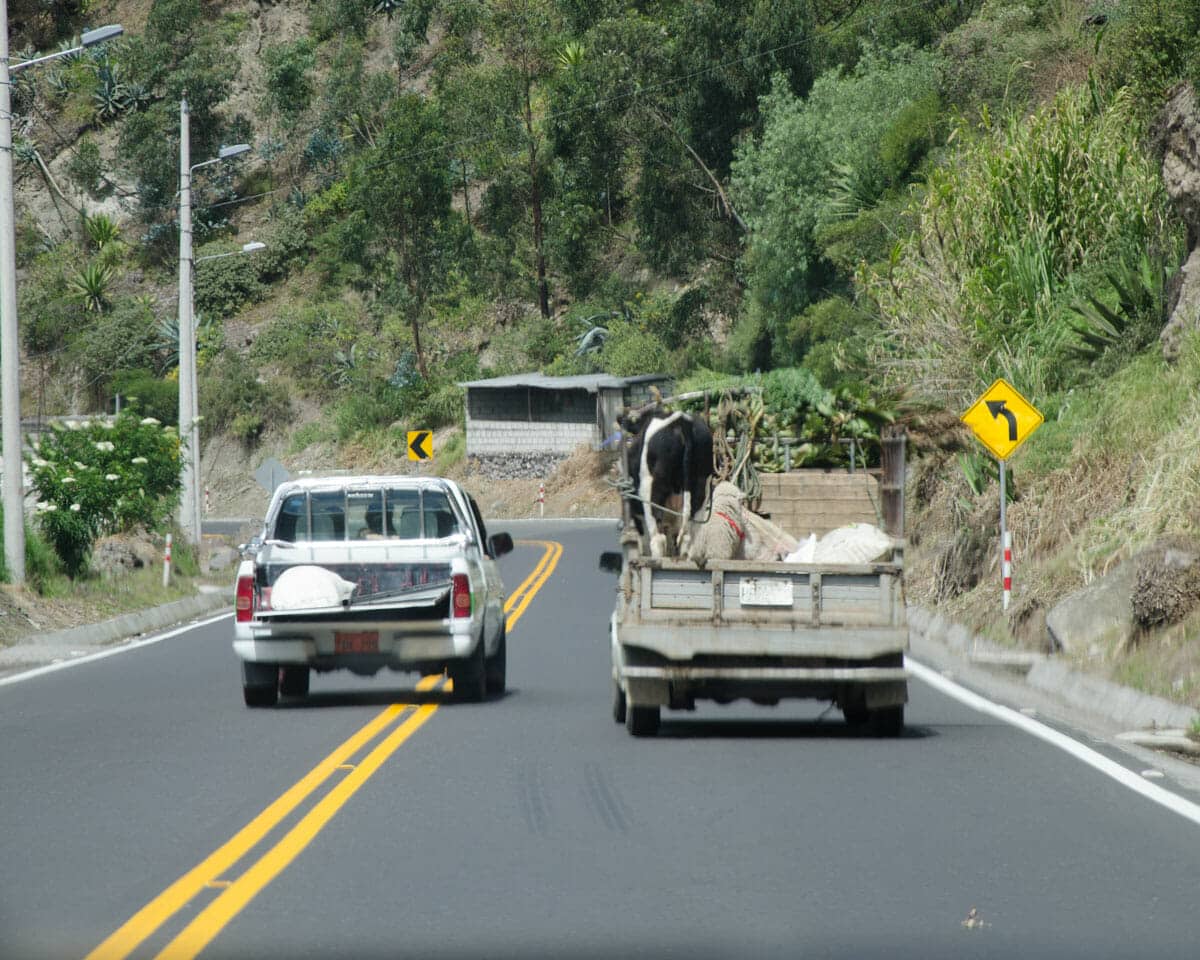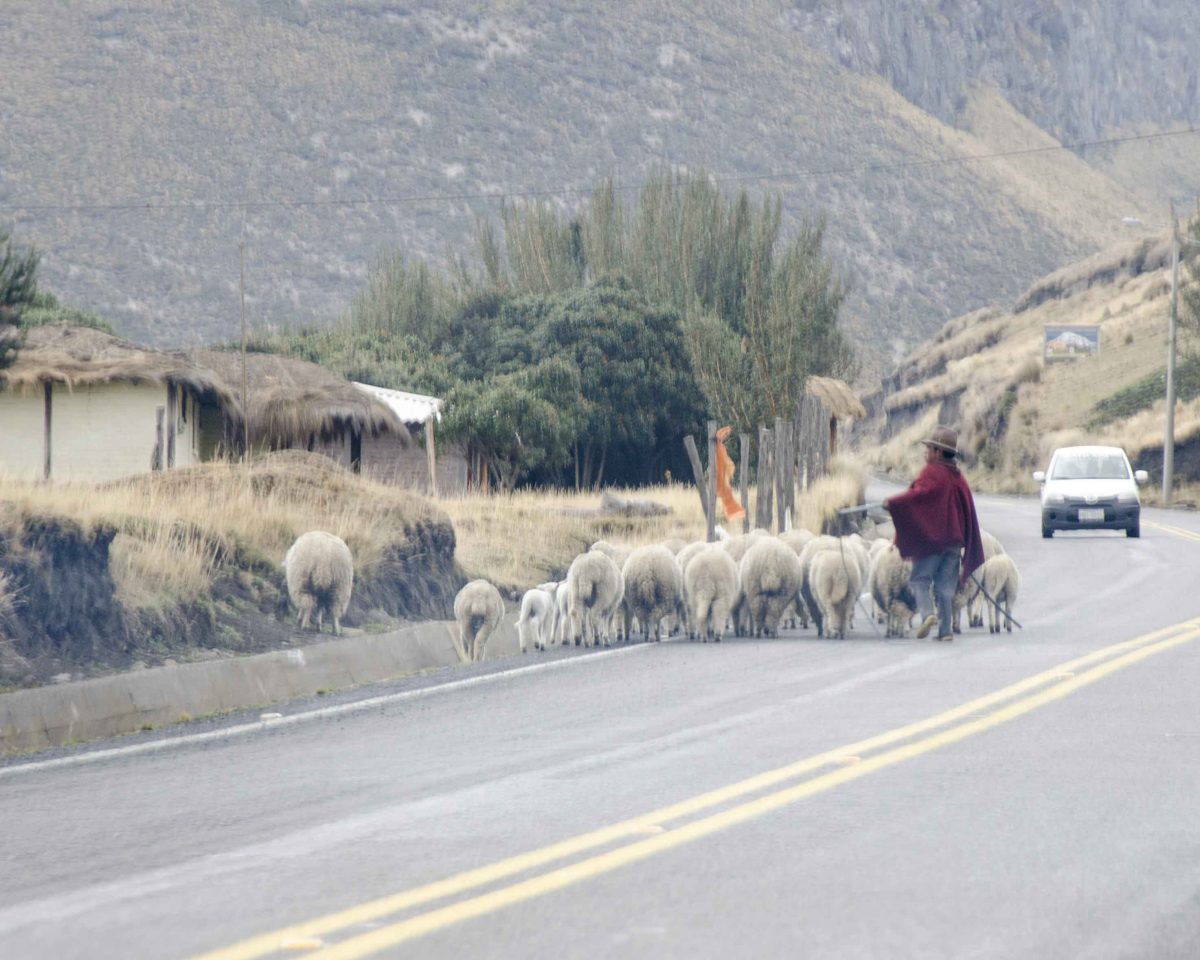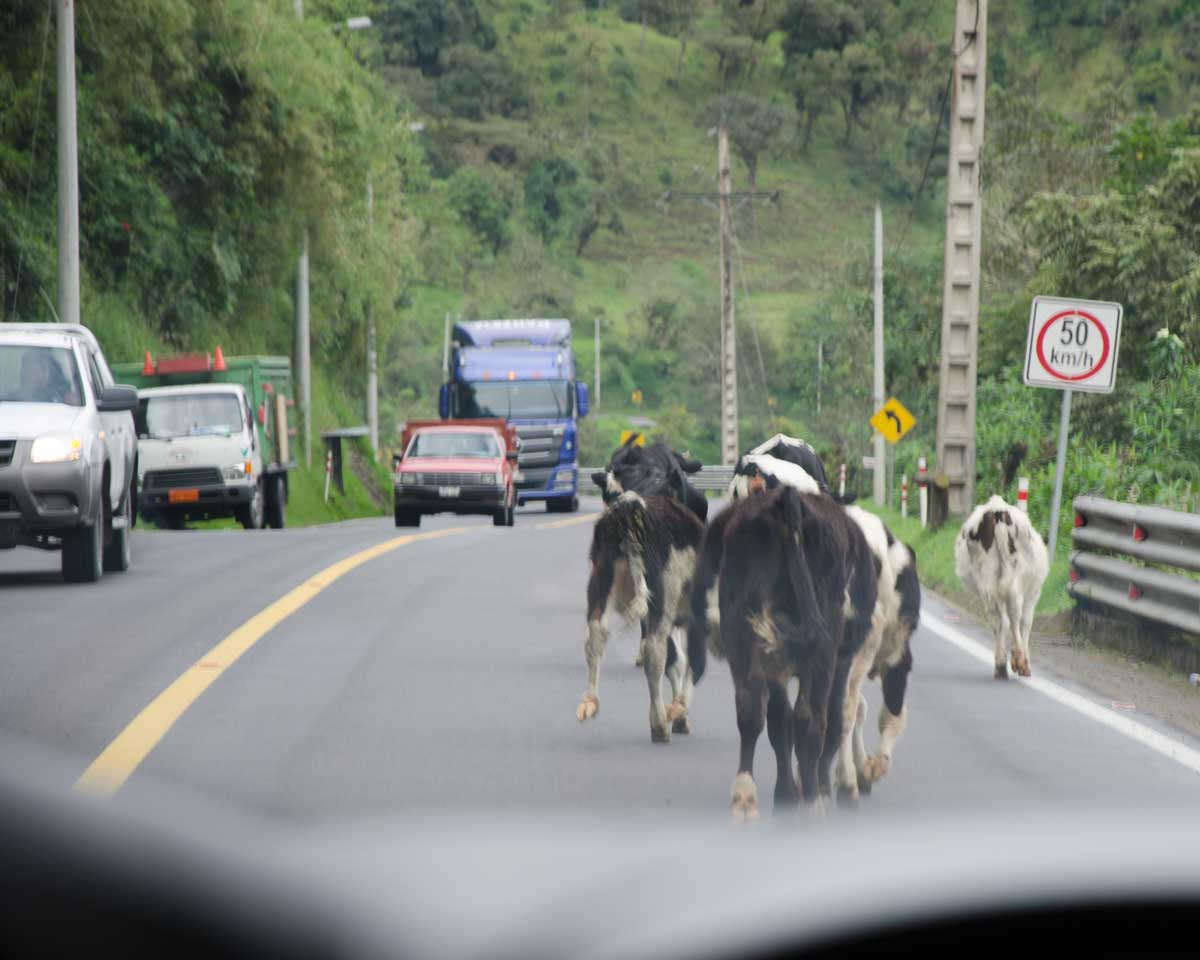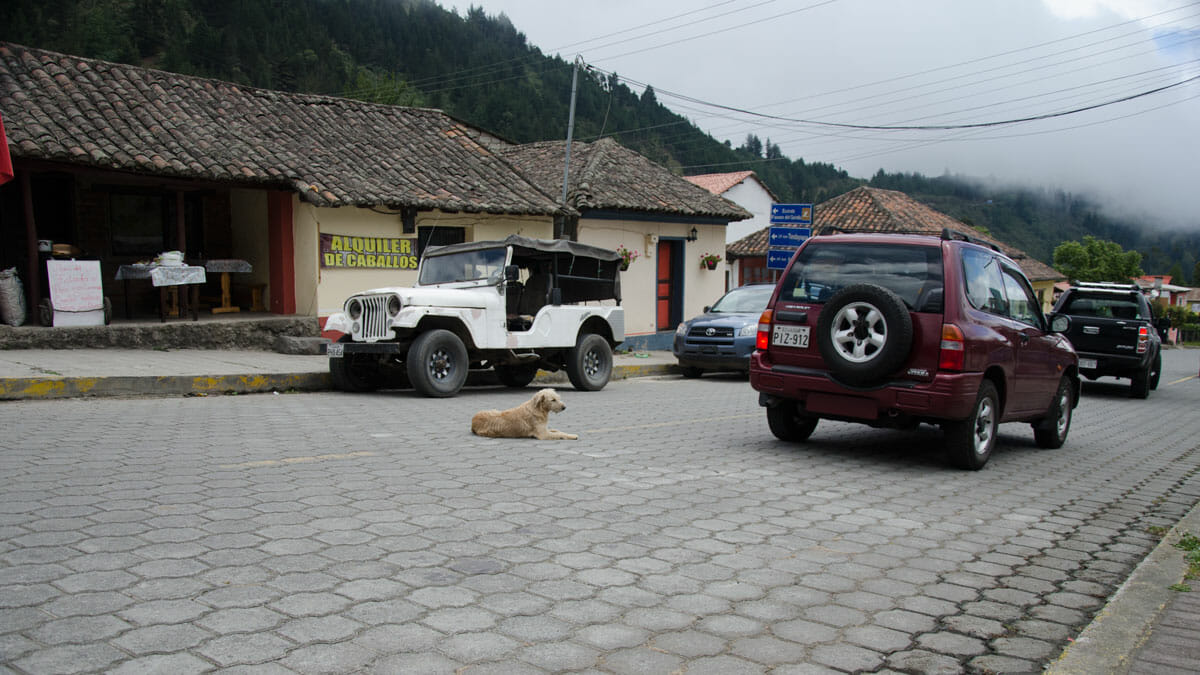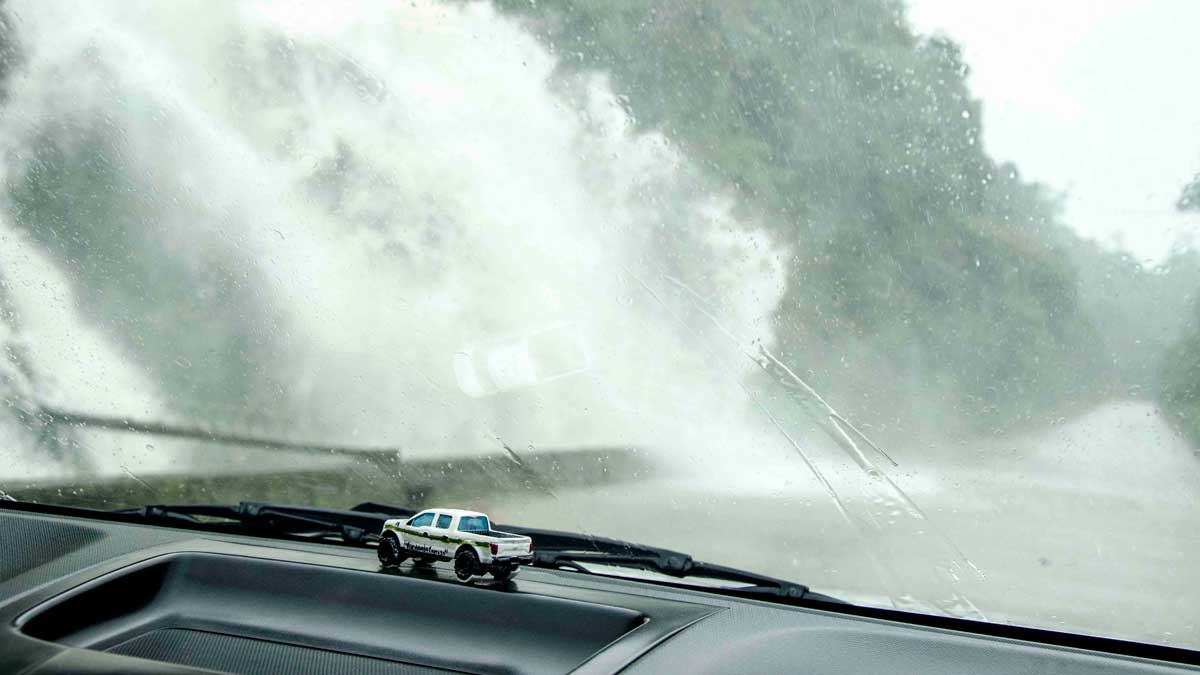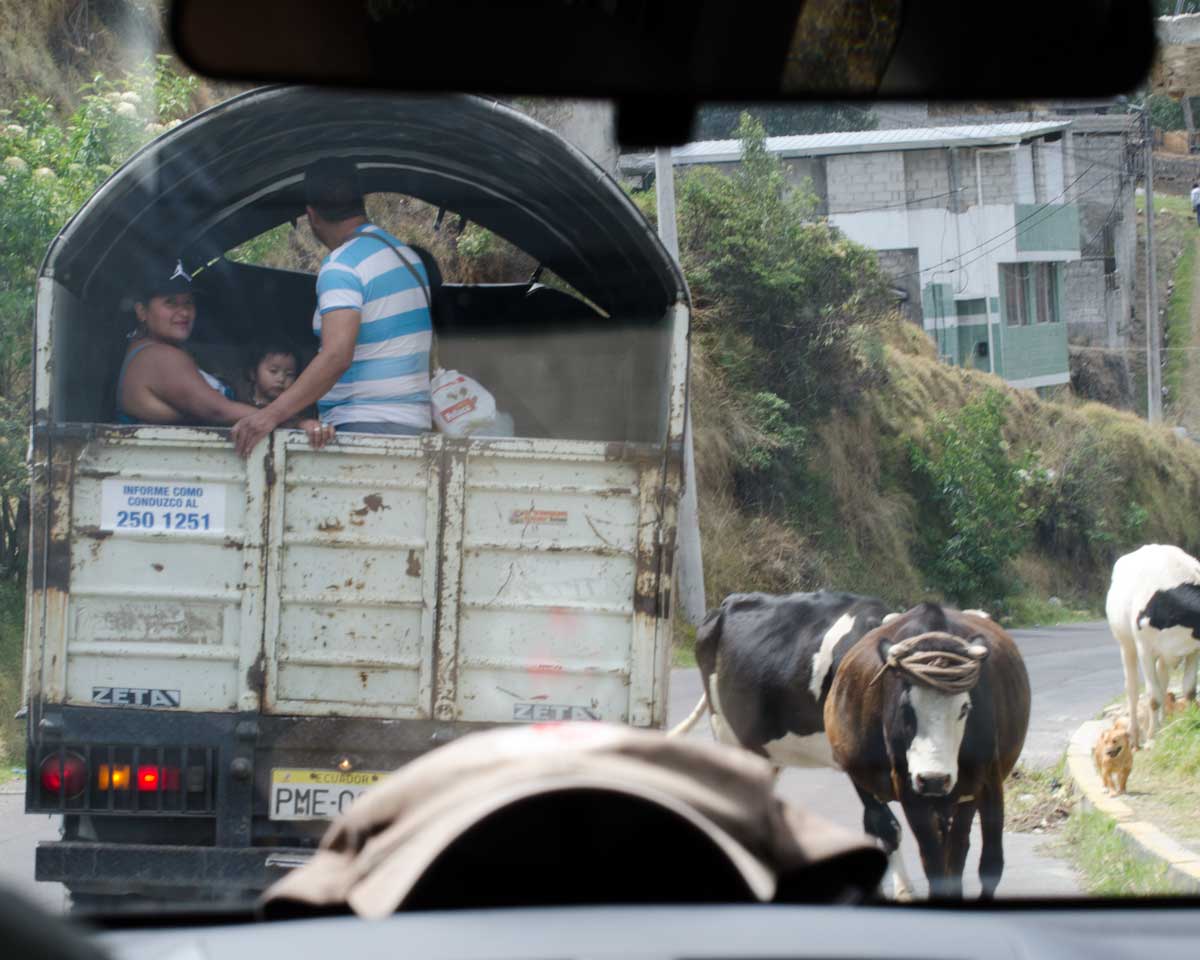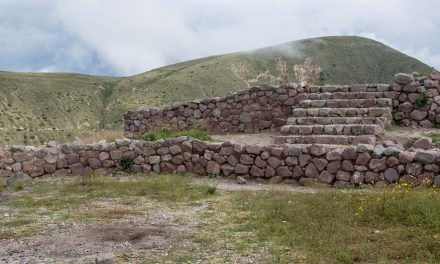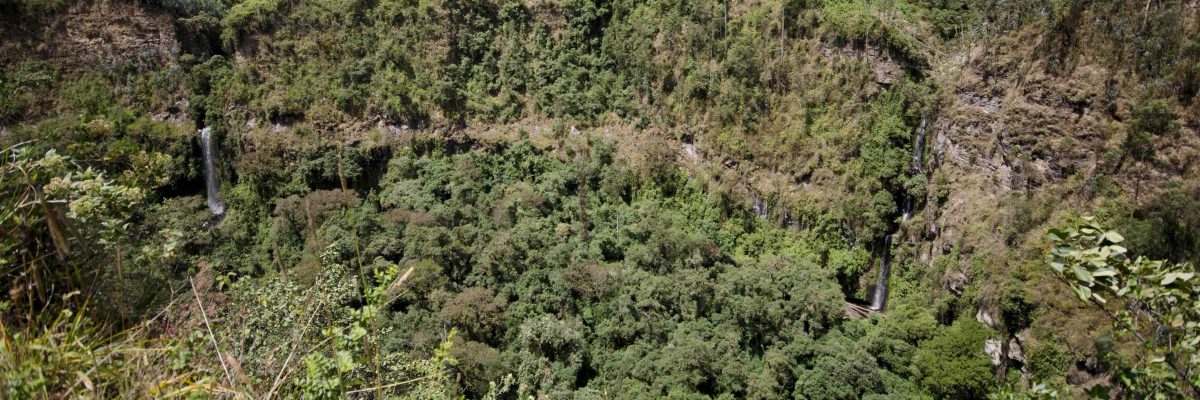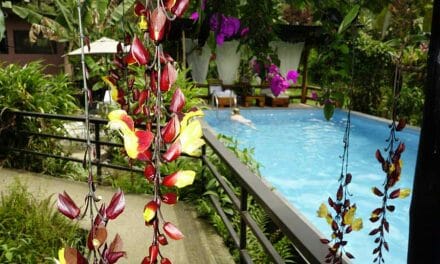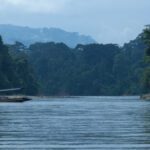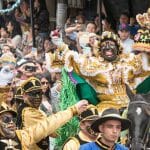It’s time that I told you some serious truths above traveling by car or bus in Ecuador. I don’t give these warnings to scare you away. I give them to make sure you understand the risks and take appropriate measures to minimize them.
Furthermore, you need to know that while we lived in Ecuador, my husband and I drove with diplomatic plates on our vehicle. It gave us a certain level of protection. In general, if an accident takes place and people are injured, all drivers go to jail until the guilty party can be determined. In fact, when we return to Ecuador later this year, we are seriously debating whether or not to rent a car. We are likely to hire local drivers or to take advantage of van transportation in between major cities.
Driving Ecuadorian Roads
In the past few years, Ecuador has improved many of its major highways. Where two-lane highways once existed, there are now six lanes. New tunnels avoid curvy mountain passes. While these new additions help make the roads safer, they don’t change the bigger picture. Drivers in Ecuador are mainly aggressive and more likely to break standard driving practices found in both the United States and Western Europe.
When we first arrived in Quito, I was actually afraid to get behind the wheel of a car. Fortunately, my husband arrived first and got the lay of the land. He was able to take his experience driving in places like Turkey and the Middle East and use those lessons to be a better driver in Ecuador. Meanwhile, I had to start from scratch.
First Day Driving
We decided to tackle my first day on the road on a Sunday morning. In Quito, and through most of Ecuador, this is the quietest time on most roads. It gave me a chance to get the lay of the land, a feel for traffic signs in a foreign language, and a feel for the differences in common driving practices.
If you decide to rent a car, we highly recommend picking it up on a Sunday morning and taking advantage of the quieter conditions. It is a great opportunity to warm-up and ease into the craziness.
Common Driving Practices in Ecuadorian Cities
So what’s so crazy about driving in Ecuador? Let’s start in the city. Our experience took place mainly in Quito though these rules apply to Guayaquil as well. In fact, Guayaquil has a reputation for being a little crazier.
Traffic signs
Not all traffic signs are created equal. While a stop sign should be a stop sign, in certain neighborhoods certain traffic signs are regularly ignored. For example, heading on Avenida Gonzalez Suarez into the Bellavista neighborhood there is a stop sign on the hill just before you come to Avenida Eloy Alfaro. No one stops unless a vehicle coming up the hill has on a left turn signal. But how is the average visitor to know that?
Signs are also different. While they use international symbols, everything is written in Spanish. It can make it hard for newcomers to navigate, even while using an app like WAZE to help out.
Everyone Uses Their Horns
Horns are a part of the Ecuadorian driving experience. In fact, we sort of missed them when we came back to the United States. If a light turns green, at least one horn will blow. Don’t take it personally if you are the lead car.
It is also common for people to lightly tap their horn when passing a stopped car, like a taxi with a passenger that might be getting in or out. It’s a warning that they shouldn’t pull back into traffic. Because, yes, drivers will pull back into the mainstream of traffic without looking to see if anyone is already there.
Horns are also used for warnings. At these times, the sound is long and loud as the person is laying their hand down hard. Be aware when you hear this kind of honking as it may be signal of a possible accident about to happen.
Horns can also be a sign of frustration. If you have a heavy-handed honker behind you, our recommendation is to find a way to let the idiot pass and get on his way. Otherwise, you might find him rear-ending you somewhere along your route.
Hazard or Warning Lights
A car with flashing hazard or warning lights could be telling you so many things that it is actually unhelpful. While you think it means they are stopped on the side of the road, it could mean that they are pausing in traffic. Or it could be that a friend is following them and the hazard lights are to make it easy to see them in traffic. Yep… we know that one from personal experience. Or it could be that their car is breaking down but they don’t want to stop. See what I mean? Just be careful of any vehicle with flashing hazards and be prepared for them to move or be moving.
Changing Lanes
On crowded city streets, changing lanes can be complicated. The general rule of thumb is that if a car is three-quarters ahead of you, it has the right to change lanes in front of you. That means it could hit you on its way over. Some drivers will use turn signals to help warn you. Others may put their hands out the window and wave. Sometimes the passenger will put their hand out the window and wave. And sometimes there is no warning at all.
People change lanes rapidly as the city planners didn’t always do a good job of making sense with left turn lanes or multi-lane avenues. Always be prepared for your lane to fill with parked cars, a stopped car, a car turning left, a pedestrian, a street vendor, a dog. You get my drift. Just be prepared.
City Buses
Buses make their own rules. When in doubt, buses always have the right of way. Be especially careful in parts of town where buses have their own special lanes running down the center of the road. Buses can enter and exit these lanes at specific points. The traffic lights attempt to help guide the average driver in these situations but they can be very confusing when you first arrive. Remember what I said about driving first on a Sunday?
If you happen to find yourself in the Metrovia lanes by a mistake, just keep driving so that you can exit as soon as possible. It technically isn’t legal but it has been known to happen. Especially when you first arrive and are confused by some of the signs. I speak from experience!
Traffic Circles
Traffic circles follow the general rule of thumb: yield to the traffic within the circle. However, if you yielded all the time, you would never move your vehicle. The traffic circles rarely empty. In these situations, it is important to be an aggressive but defensive driver. You need to learn how to judge which vehicles will actually slow down as you enter the circle or to take advantage of small but manageable gaps in the flow of traffic. Practice makes perfect. Begin practice on a Sunday morning to help ease you into it.
Going around the circle is not always the most direct route. Some traffic circles are designed with underpasses. Some of these underpasses don’t go straight under the traffic circle but will actually take you to the left or to the right. Read the signs!
In Quito, there is one particular traffic circle where you need to take extra care. It goes around the Plaza Argentina and is a major route out of town down to the city of Cumbaya. This road turns unidirectional for rush hour. In the morning, it only allows people up the mountain. At night, it only allows people down. If you get in the wrong lane at night and find yourself heading out of town by a mistake, I am sorry. There is no way to make a U-turn. Yes, both my husband and I have made this mistake. Continue to Cumbaya, find a good place to have dinner, and then come home.
Pedestrians
While there are many places for pedestrians to legally cross the road, very few seem to use them. Sidewalks are complicated as well, sometimes disappearing for pedestrians. It makes it unclear where and when you might see a pedestrian. I once saw a blind man with a cane walking through a city underpass. He taught me to expect pedestrians at any point in time during my travel through the city.
Ironically, expect pedestrians where the city has built pedestrian overpasses. For some reason, these places often attract the people who are in the biggest hurry. They really just can’t find the time to climb the stairs up and down on either side.
Stop Lights
Stop lights operate effectively in the same manner as in the United States. But what isn’t expected are traffic cops at the stop lights who direct you to cross an intersection on red lights. This is especially dangerous if people in the lanes with green lights are not paying full attention.
Our recommendation: if cops are at the intersections, pay extra close attention to the traffic cop while being aware of the lights. Or, better yet, don’t drive during rush hour.
Beggars and Street Artists
At most major intersections in Ecuadorian cities, it is common to see at least a couple of beggars and/or street artists. Most of them can be dealt with in the same way. Just shake your head no if you make eye contact. Better to just look away. However, if you are me and you pass the same people every day, you may end up handing out spare change. Just be careful if you do. Rolling down windows opens up an entirely new opportunity for thieves working in the area.
Which brings us to the warning about women’s purses and men’s wallets. While motorcycle crimes have gone down in recent years, the occasional smash and grab still takes place. It’s where someone, usually on a motorcycle, comes up next to your vehicle, smashes the window, and then grabs whatever belongings they can reach.
Keep all valuables out of sight. We kept a small amount of loose change for tolls and small purchases in the console between our seats. We kept it hidden so as not to encourage thieves to break windows while we were parked. All other belongings went on the floor of the back seat or in the rear of the car where the windows were tinted.
Vendors
Opening car windows to make purchases from vendors is also a risky business. The official rule is to never, never open your car window. I broke my rule if I saw particularly good avocados on sale. Or fresh strawberries. You can see where this is going, right?
In practicality, use common sense. In neighborhoods you know well, you will have a better idea of what feels right. Still, check out your mirrors and see if any odd characters are hanging around. If in doubt, don’t make a purchase. If you do make a purchase, just make sure to do it during a red light. You dare the wrath of your fellow drivers if you hold up traffic to buy a snack.
Window Washers
Window-washers are the most aggressive of the streetside hustlers. They will come up and start washing your car window with little to no warning. Keep eye contact with these guys. Use your hand to signal no and use your eyes and a shake of your head to confirm that you are not interested. If for some reason, you find your window being washed before you can stop the process, .25 to .50 cents is plenty to pay. You don’t have to but unless that stop light is quickly changing so that you can be on your way, it is the least aggressive choice. Just slip it through the top of the window.
Pico y Placa
Traffic is so bad in Quito during rush hour that they have established a program called Pico y Placa. During certain hours in the morning and the afternoon, cars with license plate numbers ending in a certain digit are not allowed on the streets. Your rental car will also be forbidden in the city at these times. Make sure you know what day is Pico y Placa for your vehicle or be ready to pay a large fine for ignoring the law. Dip-plated vehicles are exempt.
Common Driving Practices Outside of Cities
Once you leave the city, it would be nice to think that everything will be just a little easier. But rural driving comes with its own set of parameters. In fact, rural driving can sometimes be more dangerous.
Additionally, a quick explanation is needed. There are many, many highways in Ecuador but few are as well developed as parts of the E-35, the connector between Quito and Cuenca. In fact, most highways are just two-lane roads that run through the middle of small towns and cities along the route. Road work is a constant way of life. Expect at least one portion of the road to be torn up during your trip.
Don’t drive at night
Even if you are tempted to get just a little further down the road, refrain from driving at night. Especially outside of the city. Ecuadorians often drive at night without using headlights. Drunk driving is a common practice. And people drive even faster because the roads are less crowded. Most major accidents happen at night. Not driving at night will decrease the likelihood of getting in an accident.
Passing on Curves
Ecuador is a country with very few straight roads. There are no trips you are likely to take without curvy roads. Ecuadorians regularly pass in places we would consider very, very dangerous. BUSES pass other vehicles in places that we would consider insane.
Many times, we have been three cars abreast on roads with only two lanes. Usually, the oncoming traffic has enough warning to edge over to their right and the vehicle being passed moves to their right and the idiot doing the passing squeaks between the two. Each and every time, this left us with our stomachs in our mouths.
Animals and People
Highways are also roads that connect communities. That means people living outside of town use the highways to get into town. They will walk on the road itself, especially if the shoulder is muddy and un-walkable. Always be on the lookout for pedestrians.
Highways also make for a convenient way to move large herds from pasture to pasture. I have lost count of how many alpacas and sheep we have seen not just on rural backroads but on pretty major thoroughfares.
Finally, dogs are the worst offenders as they are rarely penned and will sometimes sleep in the center of the road. Territorial dogs will also chase down cars for fun. Yes, on the highway, not just on the smaller side roads.
Homemade Speedbumps
Speedbumps are a part of life in Ecuador. Most places have well-marked and well-signed speed bumps. But some rural communities have gone out of their way to make their own speedbumps that are just downright dangerous. If you hit them at speed, you will kill your car. Please be aware as you approach rural communities that slowing down will not only protect pedestrians, it is a way to protect your own vehicle from serious damage.
This said, when you enter a town and see cars driving on the wrong side of the road, they are often trying to avoid the speed bump. Some people will treat them more as a cone in the road or a hazard to be avoided at all costs, zigzagging their way through town.
Homemade speed bumps are often a congregation point for local vendors. So slowing down may give you a chance to pull off and purchase locally made pan de yuca or helado de paila.
Landslides
Since so many roads in Ecuador connect the high Sierra with the coast or the Amazon, it should be no surprise that they traverse some steep mountain terrain. Steep slopes plus narrow roads and wet weather conditions make for perfect landslide conditions. Even without landslides, roads can be more dangerous from excess water pouring off the mountainside. This is latter is especially bad on the road from Loja to Zamora.
If you find yourself facing a recent landslide, be patient. Very often, these are cleared for local traffic as quickly as possible. Just be prepared to cross the damaged section of the road while passing verclosely to heavy equipment and dodgy looking terrain.
Local Public Transportation
While city buses are a big deal in Quito, Cuenca, and Guayaquil, smaller communities rely on a different kind of public transportation. In places where few people own cars and a motorcycle might take a family of four to school, the most common way to travel is in the back of someone else’s truck.
These are not legal vendors of transport but they operate in almost the same way. Passengers stand on the side of the road. A driver of one of these vehicles will stop to pick them up. A local price for the distance traveled is already known by both and that fee will exchange hands, usually at the end of the trip. Gringos will be charged more unless they have figured out the system.
These vehicles tend to travel slower and make sudden stops. They can also fly down the road with passengers standing in the back, hanging on with huge smiles on their faces. Please take extra care around these vehicles as an accident would likely be fatal for almost everyone.
Not Your Average Recommendations
So you’ve read all this and we’ve scared you to death. To put this in context, we drove thousands of miles in Ecuador and did not get in a single accident. Most tourists don’t. But to help you lessen your chances of getting in an accident, here are some basic recommendations:
- Do not drive at night. Period.
- Do not take a night-bus. Most major bus accidents happen in the evening hours. I have taken one night-bus from Quito to Saraguro and will not repeat the experience. I can graphically remember waking up to see the oncoming lights of a bus directly in front of us. I then felt our bus swerve to the right. I will never know who was at fault, our own driver or the other bus driver. I only know that we avoided an accident by the skin of our teeth.
- If your budget is limited and you must travel by bus, take day transportation. Enjoy the scenery along the way.
- The next step up from budget buses is to use smaller companies that use vans for transportation. These are common in Guayaquil. We will be researching this option more heavily on our next trip to Quito.
- Our recommended choice is to hire drivers for the days you need to travel and to use local taxis for in and around the location once you get there.
- If you have a little more money in the travel budget, it might be affordable to just hire a single driver and car for your entire trip. While this idea sounds very expensive, you might be surprised. Ask a couple of companies for quotes. Or ask us to get the quotes for you. This becomes most affordable for groups of about 5-8 people.
- If you are risk averse, I do not recommend renting a car. If you are a confident driver with experience in difficult, high stress driving environments, you may want to consider renting a car. But if you want a relaxing vacation, hire someone else to drive so that you can focus on the beautiful scenery as it passes by.
And that’s it. I hope this list doesn’t stop you from visiting this stunning country. We know our regular readers keep coming back because we tell it like it is.
What would you like us to write about next? Let us know in the comments below!

